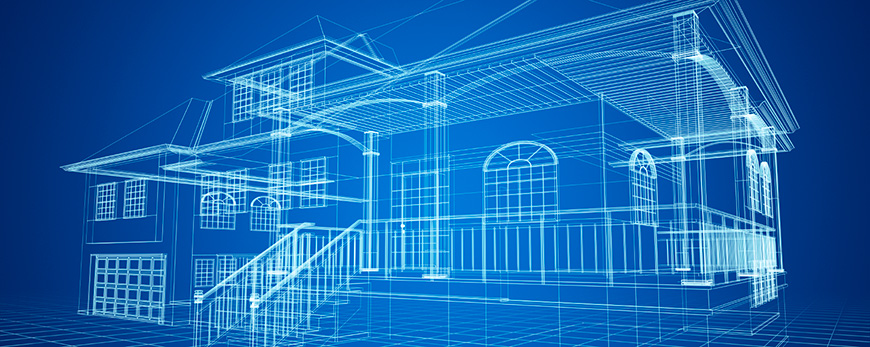Just How CDA Architects Combine Creativity and Functionality in Modern Style
Just How CDA Architects Combine Creativity and Functionality in Modern Style
Blog Article
The Effect of Technological Developments on the Style Practices of Contemporary Architects
The fast advancement of technical devices has actually substantially reshaped the style landscape for modern designers, cultivating unprecedented degrees of technology and sustainability. Checking out these dynamics reveals a nuanced interplay between technology and standard style methods, prompting a better examination of what the future holds for architectural techniques.
Advancement of Architectural Devices
Exactly how have architectural tools transformed the design and construction processes over the centuries? The development of architectural devices has considerably affected the effectiveness, accuracy, and imagination of layout and construction.
With the development of the Renaissance, the introduction of the compass and the protractor marked a pivotal change. These devices allowed engineers to achieve greater precision in their designs, facilitating the appearance of more detailed and proportional buildings. The Industrial Change additionally changed architectural exercise with the intro of mechanized devices and materials, enabling bigger and a lot more ambitious projects.
In the 20th century, the development of computer-aided design (CAD) software application changed the landscape once more, supplying designers with unmatched capacities in modeling and visualization. Today, progressed devices such as Structure Info Modeling (BIM) and parametric design software application remain to press the boundaries of building development, enabling a more integrated approach to layout and construction processes.
Boosted Cooperation in Style
As innovation proceeds to develop, enhanced cooperation in design has ended up being a keystone of modern-day building practice. The assimilation of electronic tools such as Building Information Modeling (BIM), cloud-based platforms, and advanced visualization software program has actually transformed the method engineers, engineers, and stakeholders interact throughout the layout procedure. These tools help with real-time interaction, allowing teams to share concepts, adjustments, and feedback quickly, despite geographical location.

In addition, interdisciplinary collaboration has actually been streamlined via these technical advancements, allowing designers to work a lot more carefully with various other professionals, such as metropolitan organizers and environmental consultants. The outcome is an extra cohesive approach to develop that thinks about various point of views and experience. Inevitably, improved collaboration in design is not simply a pattern; it is important for producing cutting-edge, practical, and visually pleasing style in a significantly complicated world.
Sustainability Via Modern Technology
Sustainability in design has actually progressively come to be intertwined with technical development, driving the sector toward ecologically accountable methods - cda architects. Contemporary architects are leveraging advanced technologies to minimize ecological influence while enhancing the performance of structures. One famous example is using Structure Information Modeling (BIM), which enables for precise preparation and source appropriation, lowering waste during building and promoting power performance throughout a building's lifecycle
Additionally, wise products and energy-efficient systems are being incorporated right into designs to enhance source use. Technologies such as photovoltaic cells and eco-friendly roof harness eco-friendly energy sources, adding to minimized carbon impacts. Additionally, the application of man-made knowledge in layout procedures makes it possible for designers to replicate and evaluate energy intake, guiding choices toward even more lasting results.
The combination of sustainable technologies not only aligns with worldwide ecological goals but additionally meets a see here now raising demand from customers for eco-friendly services. As designers embrace these developments, the emphasis shifts in the direction of producing spaces that are not only visually pleasing but also functionally lasting, thus redefining the criteria of modern-day style. By doing this, innovation acts as a stimulant for sustainability, making it possible for architects to create buildings that respect and boost the all-natural environment.
Obstacles in Application
While technological developments in architecture hold excellent assurance for enhancing sustainability, their implementation often encounters substantial obstacles - cda architects. One main barrier is the high understanding curve linked with new technologies. Engineers and construction experts may need substantial training to properly make use of innovative software application and tools, which can postpone task timelines and boost costs
In addition, the assimilation of emerging innovations, such as Structure Info Modeling (BIM) and lasting materials, usually requires collaboration throughout multidisciplinary groups. This cooperation can be prevented by distinctions in experience, workflows, and communication styles, bring about possible problems and ineffectiveness.
Financial restraints additionally make complex the fostering of ingenious innovations. Several building companies, particularly smaller sized ones, may lack the sources to invest in cutting-edge devices, limiting their capacity to take on bigger companies that can manage such financial investments.
In addition, regulatory frameworks and building codes might not maintain speed with technological developments, developing obscurity and potential conformity issues. This difficulty can inhibit engineers from fully welcoming brand-new modern technologies, as the danger of non-compliance might surpass the advantages. Therefore, resolving these implementation challenges is critical for the successful integration of technical innovations in contemporary building techniques.
Future Patterns in Style
The obstacles connected with the execution of brand-new look at this now innovations in style have prompted a reevaluation of future fads within the industry. As designers navigate concerns such as sustainability, urbanization, and social equity, they are progressively taking on innovative modern technologies to boost layout performance and ecological efficiency.
One popular fad is the assimilation of synthetic knowledge (AI) in the design process. AI devices can analyze vast datasets to educate design decisions, improving both creativity and performance. Structure Details Modeling (BIM) proceeds to progress, enabling real-time partnership among stakeholders and promoting structured job monitoring.
Sustainable layout practices are additionally acquiring energy, with designers focusing on adaptive reuse and regenerative style concepts that reduce source intake and waste. The consolidation of smart materials and renewable resource resources will better click here for info enhance the durability of structures in the face of climate adjustment.

Verdict
Technological developments have dramatically reshaped building design practices, assisting in improved precision, collaboration, and sustainability. The combination of tools such as Structure Information Modeling and parametric design software, along with synthetic intelligence and clever products, empowers engineers to deal with complicated challenges more efficiently.
Report this page